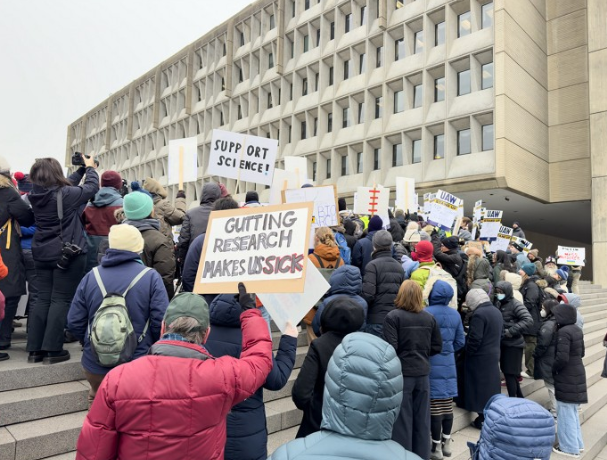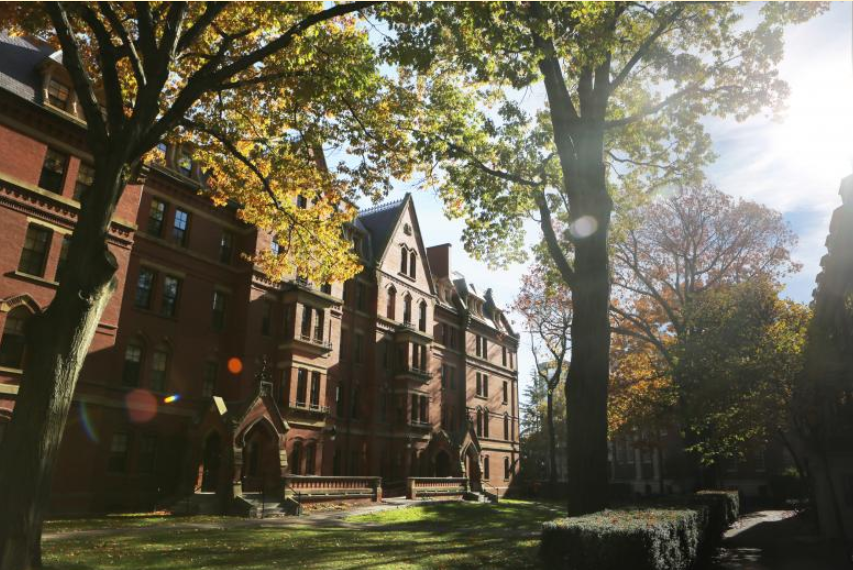The National Institutes of Health (NIH) has long been the cornerstone of biomedical research in the United States. NIH is by far the world’s largest public funder of biomedical research, with an annual budget of $47 billion paying for more than 60,000 grants.
Its size means that the agency’s funding is irreplaceable for scientific advancement and innovation. However, as part of the Trump administration’s push to consolidate government spending, it has proposed slashing the NIH’s budget by 40 percent, from $47.4 to $26.7 billion dollars.
This, alongside President Trump’s pause on all public communications by the Department of Health and Human Services (HHS), “threw sand in the gears of the NIH grant-making process, stopping the very meetings that greenlight funding for research and clinical trials” as stated by Democratic Wisconsin senator Tammy Baldwin.
A bulk of the administration’s cuts emerge from a proposed 15 percent cap on indirect research costs that totals to roughly $21 billion in funds, which the administration predicts could save the agency $4 billion. However, the NIH’s initial push to enforce that 15 percent cap down from an average of roughly 50 percent has been blocked by a federal judge. Regardless, this ruling will likely be overturned.
Those who champion Trump’s proposition note how organizations like the Columbia University of Health Sciences, New York University School of Medicine and the Sloan-Kettering Institute Cancer Research whichreceive the largest in total government aid also happen to receive the highest number of philanthropic donations..
In fact most universities and research hospitals are nonprofits that pay no federal taxes. The N.I.H. the announcement also acknowledges this fact, stating that the same institutions that accept grants from charitable foundations offer much lower overhead rates—the percentage used to allocate indirect costs to a project or product—than the federal government. This indicates that universities and hospitals willingly pursue research opportunities with less supplemental funding as means to justify acquiring government stipends.
However, it is not clear whether these organizations can fill in the funding gaps from other philanthropic sources by shifting how they apply for grants. Many officials at universities and hospitals have said that they may have to pull back on medical or scientific research. Preemptive cuts have already been made at the NIH, with nearly 800 research grants having already been terminated.
“Redirecting billions of allocated N.I.H. spending away from administrative bloat means there will be more money and resources available for legitimate scientific research, not less,” Kush Desai, a White House spokesman, said.
Of studies that have been deemed non-legitimate by the White House, 28.7 percent were HIV/AIDS related, 24.3 percent were related to Trans health and 17.1 percent are climate related. It is apparent that regardless of which grants these cuts impact, they will likely damage the United State’s rate of scientific progress.
Recently a conference was held at the University of Wisconsin–Madison with state-wide industry, university, hospital and health system partners, all urging Wisconsin’s Congressional leaders to protect funding for the National Institutes for Health . Universities of Wisconsin President Jay Rothman and other representatives spoke at the conference.
Employing more than 141,000 people statewide, Wisconsin’s biotech industry has a $37.7 billion economic impact on the state economy. The technological and health advancements that are fueled by the industry are closely intertwined with federally supported research.
CEO Nicholas Paris of Gilson Inc, a bio-health analytic instrument manufacturer based in Middleton, spoke at the event, stating, “Cutting federal research funding, particularly NIH grants, would severely impact not only our ability to innovate but also our ability to improve lives and grow our economy.”









